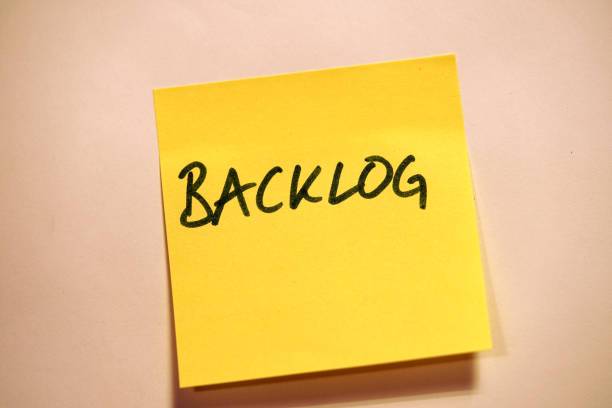Backlog refinement is a critical process in Agile project management that involves reviewing and updating the product backlog regularly. It helps teams prioritize tasks, improve estimates, and ensure that they are delivering high-quality products that meet customer needs. Effective backlog refinement requires collaboration, communication, and continuous improvement.

 What is Backlog Refinement?
What is Backlog Refinement?
Backlog refinement, also known as backlog grooming, is the process of reviewing and updating the product backlog regularly. The product backlog is a list of all the features, functionalities, and tasks required to complete the project. Backlog refinement involves breaking down large tasks into smaller ones, estimating the time required to complete each task accurately, and prioritizing tasks based on their value and importance.
 Why is Backlog Refinement Important?
Why is Backlog Refinement Important?
Effective backlog refinement is critical to the success of any Agile project. It helps teams prioritize tasks based on their value and importance, improve estimates, and minimize waste. By refining the product backlog regularly, teams can ensure that they are delivering high-quality products that meet customer needs, and they are working on the most important tasks first.
 How to Do Backlog Refinement?
How to Do Backlog Refinement?

To conduct effective backlog refinement, the development team should follow these steps:
- Plan the Refinement Meeting. The first step is to plan the refinement meeting. The meeting should be scheduled at regular intervals, and all members of the development team should be present.
- Review the Product Backlog. During the refinement meeting, the development team should review the product backlog, prioritize tasks based on their value and importance, and break down large tasks into smaller ones.
- Estimate the Time Required for Each Task. The development team should estimate the time required to complete each task accurately. There are two popular estimation techniques: story points and time-based estimates.
- Revise the Product Backlog. After estimating the time required for each task, the development team should revise the product backlog by updating the estimates and priorities.
- Repeat the Process Regularly. The refinement process should be repeated regularly to ensure that the product backlog is up-to-date, and the team is working on the most important tasks first.

 Tools to Use for Backlog Refinement
Tools to Use for Backlog Refinement

Several tools can be used for backlog refinement, including:
- Agile project management software: Agile project management software such as Jira, Trello, or Asana can be used to manage the product backlog, prioritize items, and collaborate with team members.
- Whiteboards and Post-it notes: Physical tools such as whiteboards and Post-it notes can be used to visualize the product backlog, prioritize items, and organize tasks.
- Spreadsheets: Spreadsheets can be used to manage and organize the product backlog, track progress, and estimate effort.
- Agile planning poker: Agile planning poker is a collaborative and fun way to estimate the effort required to complete a product backlog item. The team members discuss and agree on the effort required for each item, ensuring that everyone is on the same page.
 Best Practices for Backlog Refinement
Best Practices for Backlog Refinement
Now that we have discussed the key steps involved in backlog refinement, let's delve into some best practices that can make the process more efficient and effective.
Involve the Entire Team
Backlog refinement is not just the responsibility of the product owner, but the entire development team should be involved in the process. This includes developers, testers, designers, and other stakeholders. By involving the entire team, you can get a broader perspective on the requirements, identify potential roadblocks, and ensure that everyone is aligned towards the product vision.

Prioritize Backlog Items
Not all backlog items are created equal. Some are more important than others and should be prioritized accordingly. Prioritization should be based on factors such as customer value, business impact, technical complexity, and dependencies. By prioritizing backlog items, you can focus on the most critical features first and avoid wasting time on less important ones.
Keep the Backlog Up-to-date
The backlog is a living document and should be kept up-to-date at all times. As new requirements emerge or priorities change, the backlog should be updated accordingly. This ensures that everyone is working with the latest information and reduces the risk of miscommunication or wasted effort.
Break Down Large Items into Smaller Ones
Large backlog items can be overwhelming and difficult to estimate. Breaking them down into smaller, more manageable pieces can make them easier to understand and estimate. This also allows you to focus on one piece at a time, reducing the risk of scope creep and ensuring that progress is made.
Use Visualization Techniques
Visualization techniques such as user stories, personas, and story mapping can help to clarify requirements and facilitate discussion. They can also help to identify gaps and inconsistencies in the requirements, reducing the risk of misinterpretation or missed requirements.

Review and Refine Regularly
Backlog refinement is not a one-time event but an ongoing process. It should be reviewed and refined regularly to ensure that it remains relevant and effective. By reviewing the backlog on a regular basis, you can identify potential issues early and take corrective action before they become major problems.
 Conclusion
Conclusion
Backlog refinement is a critical part of the agile development process that helps ensure that everyone is aligned towards the product vision and working towards the same goals. By following the key steps and best practices outlined in this article, you can make the process more efficient and effective, and ensure that you are building the right product for your customers.
Remember to involve the entire team in the process, prioritize backlog items based on their importance, keep the backlog up-to-date, break down large items into smaller ones, use visualization techniques, and review and refine regularly. Effective backlog refinement requires a combination of technical skills, soft skills, and teamwork. By mastering this process, you can ensure that your team is always working on the most important features and delivering value to your customers.





